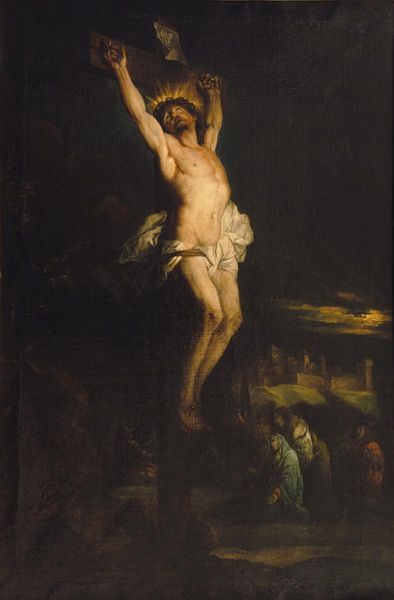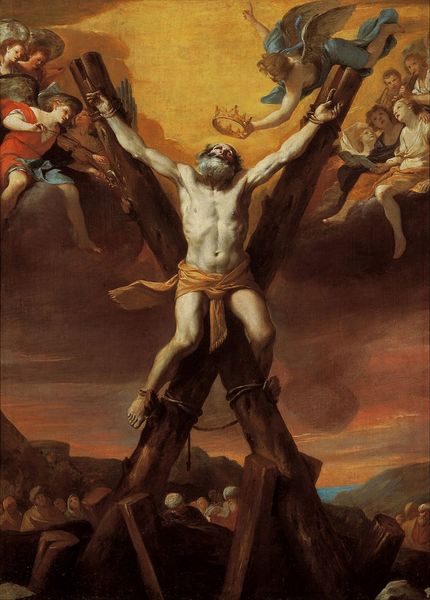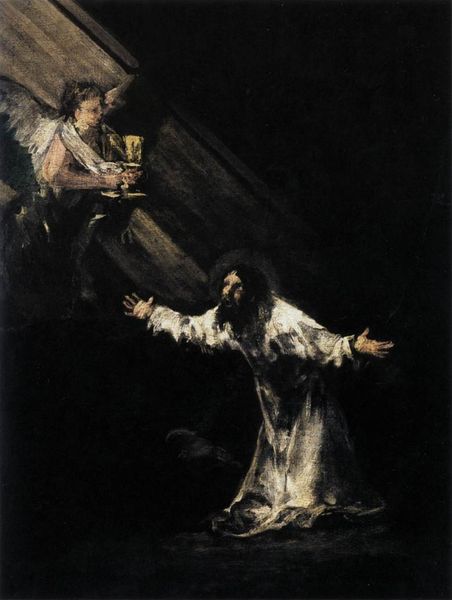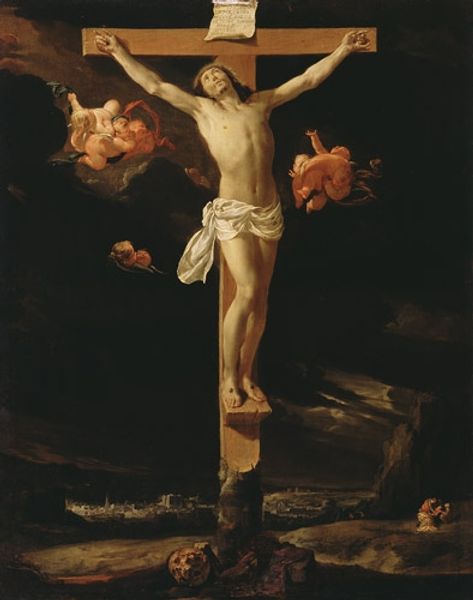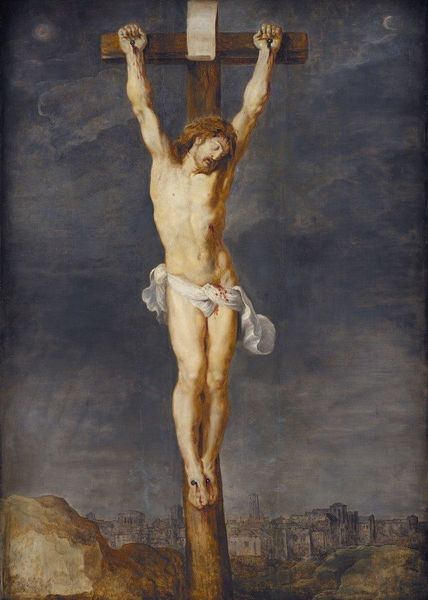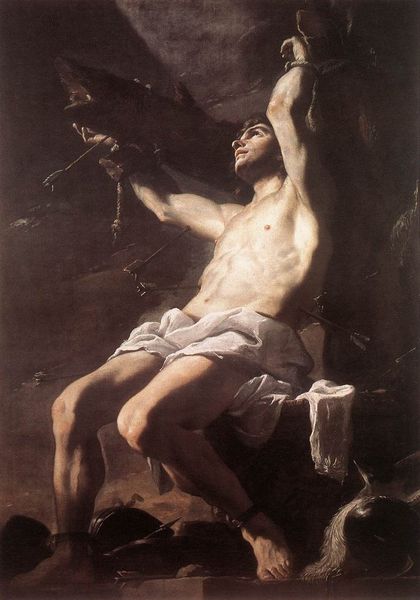
painting, oil-paint
#
portrait
#
allegory
#
narrative-art
#
painting
#
oil-paint
#
landscape
#
figuration
#
oil painting
#
romanticism
#
history-painting
#
portrait art
Dimensions: 36.5 x 28.5 cm
Copyright: Public domain
Curator: Leonardo Alenza’s “Satire of the Romantic Suicide,” painted in 1839, offers a striking, and, I think, sardonic take on the Romantic obsession with death. Editor: My initial reaction? This is intense! The contrast between the frantic figure leaping off the cliff and the gruesome details in the background really hits you. Curator: Indeed. Alenza uses oil on canvas to create this theatrical scene. Notice the tormented man, seemingly flying off the cliff edge, a dagger clutched in his hand. It’s melodrama at its finest. We have to see the context within the turbulent socio-political landscape of Spain at the time to understand this piece's role. Editor: I'm particularly drawn to how Alenza positions the other bodies in the painting as props or warnings. What statements about class, social status, or romantic relationships can we make considering this is, ultimately, a landscape painting? Curator: Alenza satirizes the performative aspect of Romanticism. Consider the symbolism – the desk overflowing with papers, the skull adorned with laurel—objects that signify intellect and artistic aspirations. This mocks the supposed depth and sincerity of Romantic ideals. He seems to imply they are foolish. Editor: But isn't there also something about challenging the norm here? Think about gender roles at that time; who are allowed the space to lament unfulfilled desire or romanticized ideas of liberty? Curator: Absolutely. And Alenza himself positioned this painting within the culture of Romanticism, painting for an educated middle class that had specific socio-economic ideas that he, like many others, opposed. His biography reflects an artist trying to undermine conventions to critique them, using that social commentary in his own artistic voice. Editor: It’s a complex dialogue about freedom, authenticity, and societal expectations, made starker because of its caricaturistic qualities. Alenza urges the public to consider whose experiences are valorized in tragedy, and how, using color and composition that create unease in the viewer. Curator: And it serves as a sharp commentary on the historical conditions and attitudes prevalent in Alenza’s time, capturing a society grappling with its own identity. Editor: Yes. It makes me consider whose deaths are mourned and how society participates in sensationalizing personal tragedy. Curator: In a time where museums are evolving and becoming cultural hubs to help explore our contemporary realities, "Satire of the Romantic Suicide" serves as a crucial painting. Editor: And as a piece offering important historical insight. It resonates profoundly with conversations we’re having today.
Comments
No comments
Be the first to comment and join the conversation on the ultimate creative platform.
